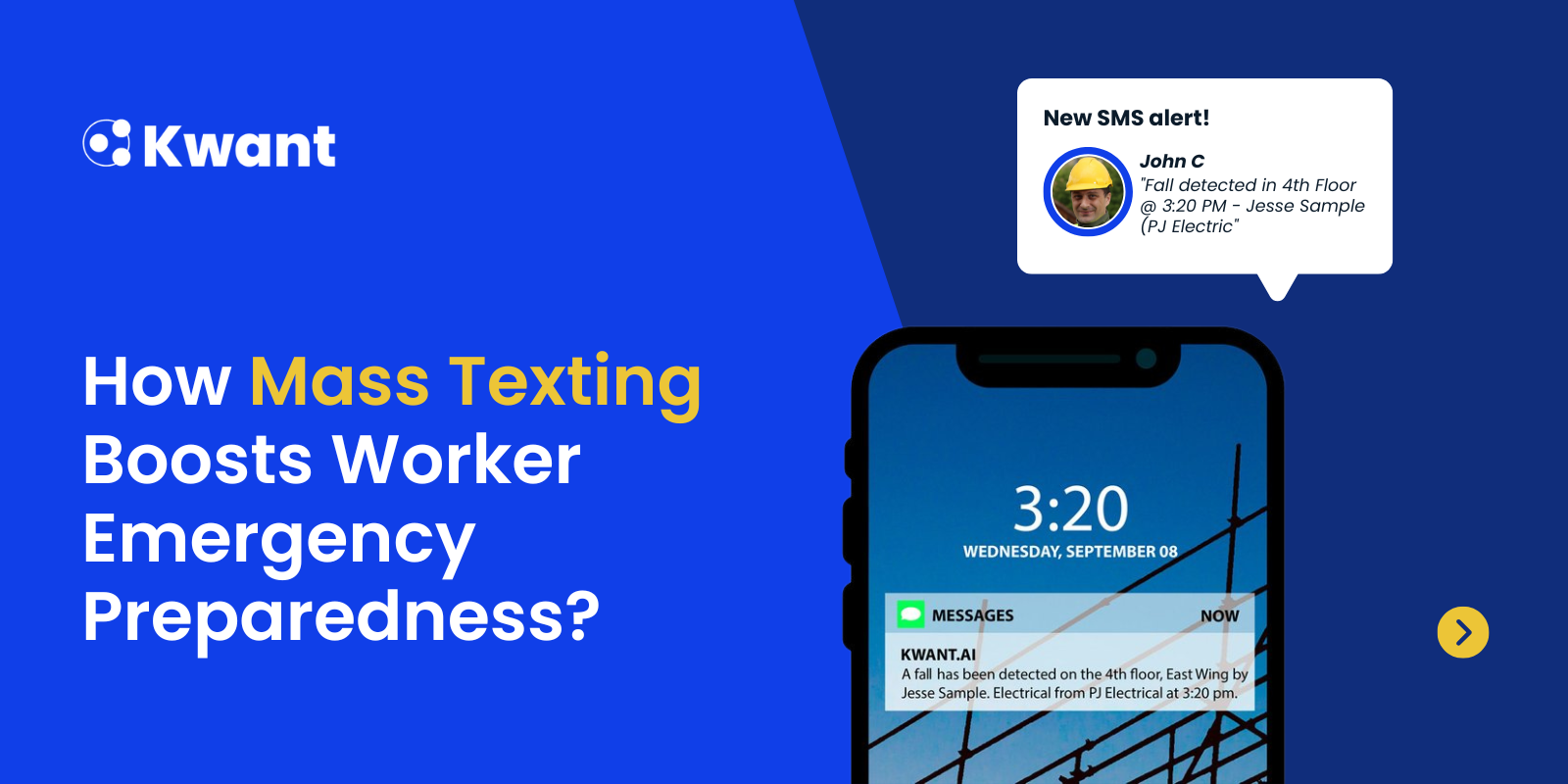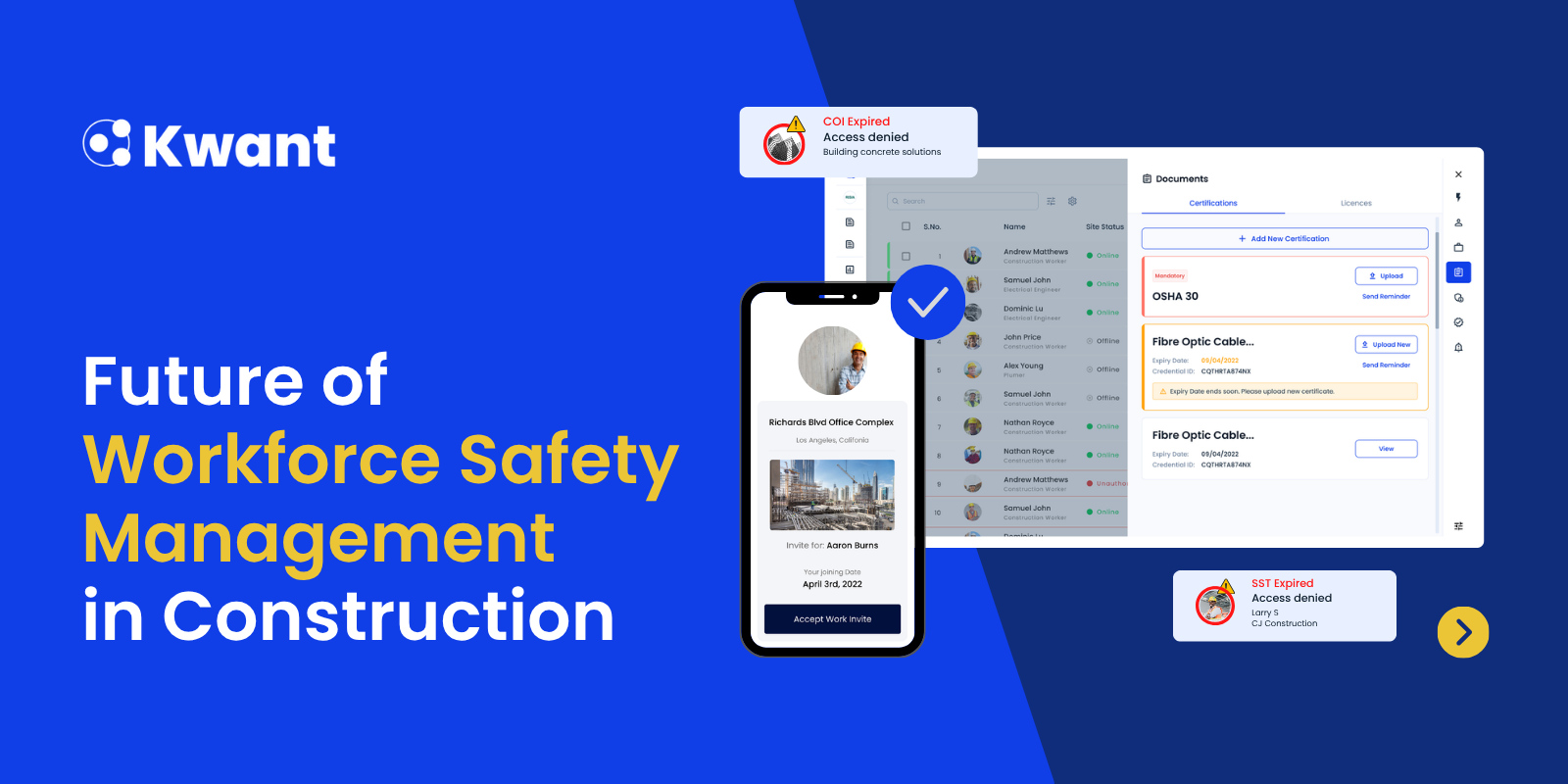How to choose Workforce Management Solutions for Large-Scale Construction Projects in 2025
For general contractors navigating the complex world of large-scale construction, managing your workforce effectively isn't just about efficiency; it's about the very success of your projects. In 2025, with technological advancements accelerating and project demands intensifying, choosing the right workforce management solution is more crucial than ever. This isn't a "one size fits all" decision; instead, it requires a strategic approach to find a solution that truly empowers your team and streamlines your operations.
Understanding the Evolving Landscape
The construction industry is constantly evolving. Labor shortages and the increasing complexity of projects mean that traditional methods of workforce management are simply no longer enough. Forward-thinking general contractors are embracing technology to gain a competitive edge. Ultimately, the goal is to optimize labor, enhance communication, ensure compliance, and boost overall productivity.
What is Workforce Management, and Why Does it Matter for Large-Scale Projects?
At its core, workforce management solutions encompass a suite of tools and processes designed to optimize the productivity and efficiency of your entire workforce. For large-scale construction projects, this means seamlessly coordinating hundreds, if not thousands, of individuals across complex job sites. Think about everything from scheduling and time tracking to compliance and skill management. A robust workforce management solution provides a centralized platform for all this crucial data, helping you make informed decisions and keep projects on track.

Key Considerations for 2025: What to Look For
When evaluating workforce software for your large-scale construction projects in 2025, keep these essential features and considerations in mind:
1. Real-Time Visibility and Data Analytics
You can't manage what you can't see. Therefore, a top-tier workforce management solution should offer real-time visibility into your entire workforce. This includes:
- Real-time job site monitoring: Track worker check-ins, equipment usage, and material deliveries. GPS and RFID tracking can be invaluable here.
- Performance dashboards: Get instant insights into productivity, labor costs, and project progress.
Predictive analytics: Leverage AI to anticipate staffing needs, prevent labor shortages, and identify potential issues before they escalate. For instance, AI can automatically adjust crew schedules based on real-time project progress.
Platforms like Kwant provide smart badges, turnstiles, and dashboards that offer real-time visibility into site activity, crew distribution, and safety incidents.
2. Robust Scheduling and Resource Optimization
Efficient scheduling is the backbone of any large construction project. Look for software that provides:
- AI-powered scheduling: Automatically adjust schedules based on real-time needs, considering factors like employee availability, skills, and even weather conditions.
- Dynamic task assignment: Assign tasks based on worker skill levels and availability.
- Resource management: Tools for efficient allocation of personnel, equipment, and materials.
3. Comprehensive Contractor Tracking and Contingent Workforce Management
Many large construction projects rely heavily on a contingent workforce, including freelancers, subcontractors, and temporary staff. Therefore, your solution must excel at contractor tracking capabilities like:
- Streamlined onboarding and offboarding: Automate the process of bringing on new contractors, ensuring all necessary documentation, certifications, and compliance checks are completed efficiently.
- Centralized contractor profiles: Keep all contractor information, including certifications, training, and performance history, in one easily accessible location.
- Compliance management: Crucially, the software should help you navigate the complexities of labor laws and tax regulations for your contingent workforce, preventing misclassification risks and ensuring adherence to safety standards. Look for automated tracking of labor law changes and built-in compliance alerts.
- Performance tracking and feedback: Just like permanent employees, contingent workers benefit from regular feedback and recognition
4. AI-Powered Insights & Predictive Safety: In 2025, workforce management isn’t just about tracking—it’s about anticipating. Platforms like Kwant use anonymized data from smart badges and field activity to:
- Identify patterns that precede incidents
- Predict labor shortfalls or fatigue risks
- Automatically adjust crew allocations or safety protocols in real time
This level of insight helps general contractors shift from reactive problem-solving to proactive risk management.
5. Seamless Integration Capabilities
A truly effective workforce management solution won't operate in a silo. On the contrary, it should integrate effortlessly with your existing systems, such as:
- Project management tools: Connect with platforms like Procore, CMiC, ACC, or Oracle Primavera for a unified view of your projects.
- Payroll and HRIS systems: Validate payroll data with automated headcount and workforce hours data to improve accuracy and reduce administrative workload.
- Accounting software: Ensure adherence to budgetary constraints by correlating scheduled labor hours with project budgeting.
6. Focus on Safety and Compliance: Empowering Safer Jobsites with Smart Technology
In large-scale construction, safety isn’t just a priority—it’s a daily challenge. A modern workforce management platform must go beyond digitizing paperwork to actively enhance jobsite safety in real time.
- Smart Badging for Safety & Accountability: Smart badges do far more than track time—they serve as real-time safety devices.
- Track worker locations live to understand who’s in which zone and for how long.
- Assign digital credentials, so only certified workers can enter restricted or hazardous zones.
- Enable contactless check-in at muster points or evacuation zones, providing full visibility during drills and real emergencies.
- Zone Restriction to Prevent Risk: Using ZoneIQ, Kwant allows teams to digitally map out high-risk areas and restrict access in real time.
- Only authorized personnel with verified training can enter designated unsafe zones.
- Trigger automated alerts when someone enters an unauthorized zone or stays beyond a safe duration.
- Use historical heatmaps to analyze congestion, dwell time, or potential risk exposure.
- Fatigue Management = Proactive Safety: Long hours and high-heat environments can lead to fatigue—a major cause of accidents on-site.
- Get real-time alerts when fatigue thresholds are approached.
- Schedule automated breaks and adjust crew assignments accordingly.
- Support wellness initiatives with personalized fatigue insights per worker or crew.
- Muster Point Visibility and Incident Response: During emergencies or evacuations, speed and clarity save lives. Pairing your workforce management tools and safety plan can give superintendents and safety officers instant headcounts and location data.
- Live dashboards show who is accounted for and who is still at risk.
- Easily run evacuation drills with accurate reporting and compliance logs.
- Reduce chaos and improve response time during critical events.
- Streamlined Compliance and Reporting:
- Automated safety checklists and incident reports: Digitize your safety workflows—from training verification and daily toolbox talks to incident documentation and audit trails.
- Auto-flag expired certifications or missing documentation.
- Tie worker tasks to training history and location-based safety exposure.
- Generate detailed reports for OSHA, owners, or insurance partners with a few clicks.
- Auto-flag expired certifications or missing documentation.

The Benefits for General Contractors
By thoughtfully selecting and implementing the right workforce management solution, general contractors can unlock a multitude of benefits, including:
- Increased efficiency and productivity: Automate routine tasks, reduce administrative burdens, and optimize labor allocation.
- Reduced operational costs: Minimize overtime, prevent labor shortages, and streamline material usage.
- Improved project delivery times: Better scheduling and real-time insights lead to fewer delays and more predictable outcomes.
- Enhanced compliance and reduced risk: Stay on top of labor laws, safety regulations, and contractor classifications.
- Better decision-making: Access to real-time, actionable data empowers you to make smarter choices.
- Higher worker satisfaction and retention: Efficient processes and clear communication can lead to a more engaged and satisfied workforce.
Financial Impact and ROI:
Beyond merely reducing operational costs, a robust workforce management solution offers significant financial impact and a clear return on investment for general contractors. It provides detailed cost savings by precisely tracking and optimizing labor, leading to a tangible reduction in unnecessary overtime, minimizing idle time for both personnel and equipment, and preventing costly rework that often stems from miscommunication or incorrect task assignments. Furthermore, the granular data collected by workforce management software directly contributes to improved bidding and estimation.
By analyzing historical project data on labor hours, productivity rates, and resource utilization, contractors can develop more accurate and competitive proposals, significantly increasing their chances of securing profitable projects. This real-time visibility also facilitates precise job costing and profitability analysis, allowing you to continuously monitor labor hours against specific tasks and budgets, identifying potential overruns early and empowering proactive adjustments to maintain project profitability.
Learn How Kwant Saved Malbro Construction $375K Annually
Moving Forward with Confidence
Choosing a workforce management solution for large-scale construction projects in 2025 is more than a technology decision—it’s a strategic investment in the future of your business. The right platform should offer more than just tools; it should empower your teams with real-time visibility, streamlined scheduling, integrated compliance, and field-ready access to data. As projects grow in complexity and pace, these capabilities become essential to staying competitive.
There are many strong solutions available to support different aspects of workforce management. As you evaluate your options, consider how these tools fit together—and whether a unified platform can better support your long-term goals.
A Unified Approach in a Specialized Landscape
The construction technology space is filled with impressive tools that address specific workforce challenges. LaborChart excels in labor forecasting and scheduling across multiple projects. Bridgit offers powerful workforce planning and resource intelligence. HammerTech provides digital tools to manage site safety and compliance, while Skillit is innovating how contractors connect with skilled tradespeople.
Each of these platforms brings real value to the table—and together, they reflect the industry’s growing focus on technology-driven workforce optimization.
Kwant builds on this momentum by offering a unified solution. Instead of relying on multiple systems for scheduling, tracking, and safety, Kwant combines these capabilities into a single Workforce Operating System—integrating smart badging, zone-based access control, real-time labor visibility, compliance tools, and predictive analytics into one cohesive platform.
For general contractors managing large-scale projects, this integrated approach means less complexity, faster decision-making, and a more connected workforce—all while complementing the broader ecosystem of construction technology.
Ready to streamline your construction operations and boost productivity? Explore Kwant cutting edge workforce management solutions today!
.svg)

.png)








%20(1).svg)














